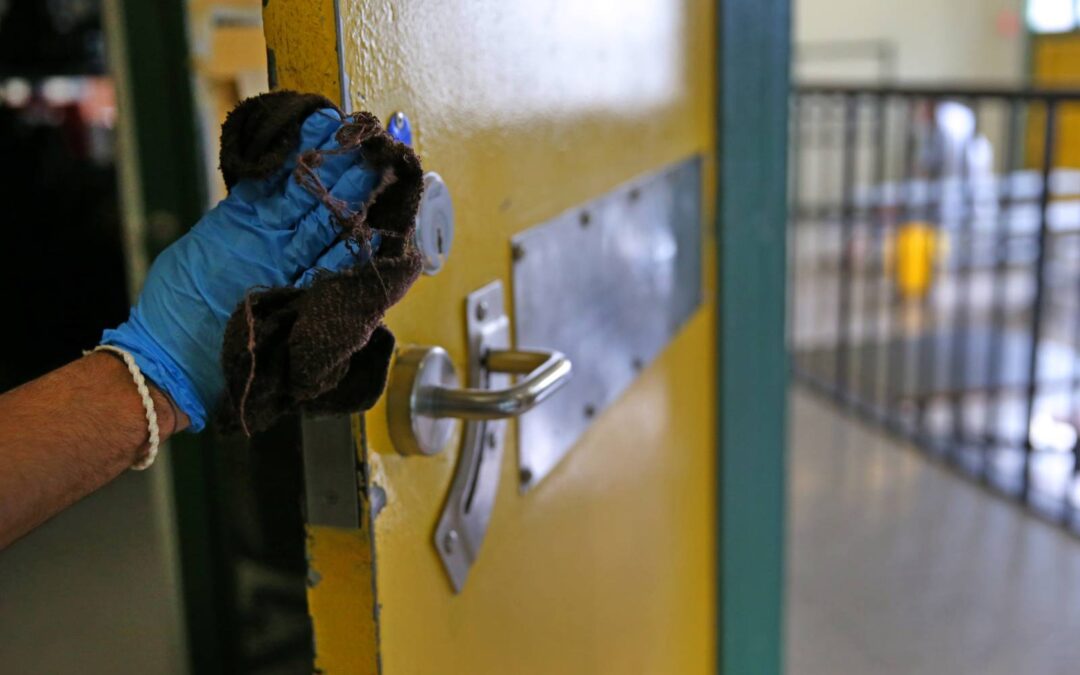Every state has struggled to curb community spread of the coronavirus over the course of the past year. Across the United States, prisons and jails have been hit particularly hard by the largest outbreaks of the virus due to their dense populations. These spaces were never intended for social distancing, let alone other effective implementation of healthy practices known to curb spread such as washing/sanitizing hands and wearing masks. A research letter published on The Journal of the American Medical Association website stated that after adjusting for age and sex, those incarcerated in the U.S. have five times the risk of testing positive for the coronavirus and three times the risk of dying from the virus, compared to the risks for the rest of the U.S. population.
A disjointed federal response to the pandemic left states to their own devices when it came to handling the community spread of COVID-19. A report by the ACLU and Prison Policy Initiative examined how each state acted to protect incarcerated people and facility staff from COVID-19 and assigned a letter grade to each. No state received a passing grade for their efforts. Washington state got an F+. While the report recognizes that Washington state took some positive steps, such as “authorizing the release of both medically vulnerable people and those nearing the end of their sentences,” and “suspending incarceration for technical violations of community supervision,” it indicates that there is ample room for improvement. The only states to have completed comprehensive COVID testing of incarcerated individuals in state prisons were Massachusetts, Michigan, Tennessee, West Virginia, and Vermont. New Mexico, West Virginia, and Massachusetts were the only ones to have tested all correctional staff. After incarcerated individuals sued for better protections from the virus, The Washington State Department of Corrections reported that “between April 17 and May 15, 2020, 422 individuals were released on emergency commutation, 528 transferred to RRE, and 66 were furloughed (1,016 in total).” Some of these individuals have since either returned to a DOC facility due to violations of release conditions, have a new active warrant, or are currently jailed with a new felony charge, indicating that it is not enough to release incarcerated people without the proper support. DOC recognizes that their proposals “are not sustainable and create community risk” without increased spending targeted at reducing recidivism.
Incarcerated people are not the only ones who are negatively impacted by a lack of effective COVID response inside our state prisons and jails. In Washington, 15% of the confirmed COVID cases in prisons and jails were reported by employees and staff that were infected. As of February 1, 2021, The Washington State Department of Corrections indicates on their website that of over 7,000 confirmed COVID cases in Washington state prisons and jails since the start of the pandemic, 5,939 of those cases have been documented among the incarcerated population, and 1,075 of those cases have been self-reported by department employees and contracted staff who work in connection with the state’s prisons and jails. On a national level, the percentage of COVID cases amongst employees and staff working at prisons and jails is even higher, 23% over the same time period. The COVID Prison Project shows that 366,109 cases have occurred among incarcerated individuals and 85,881 cases have been reported by staff working in prisons. These numbers do not reflect the transmission from prisons and jails that further reaches into surrounding communities when workers return home from their shifts.
Along with improving the infrastructure to release people from prisons and jails to reduce community spread of COVID, providing vaccines to those who are incarcerated should be made a priority. In an article from Prison Policy Initiative reviewing each state’s plan for vaccinations to see if, and in what phase, states said they would make vaccines available to people in prisons and jails, only 8 states planned to give vaccines to both incarcerated people and corrections staff in their first phase of vaccine rollout. Some states plan to allow staff of prisons and jails access to vaccines in an earlier phase than when they will provide access for incarcerated people, ultimately of little help in slowing spread within these facilities. Other states don’t mention incarcerated people or prison and jail staff in their vaccine rollout plans at all. Washington state lists both incarcerated people and corrections staff in the second phase of rolling out the vaccine.
In the effort to curb the spread of COVID in Washington state, curbing the spread in prisons and jails must be a priority. Those who are incarcerated and the people who work in prisons and jails need comprehensive COVID testing. The population of incarcerated individuals can be reduced further to alleviate overcrowded and cramped prisons and jails, and people who are released can be supported through increased spending to make their release sustainable. All people that are incarcerated and those that work in prisons and jails should be at the top of the list for receiving COVID vaccines. Taking these steps would reduce the spread of COVID in prisons and jails, as well as in the surrounding communities across Washington.
Sources
https://jamanetwork.com/journals/jama
https://www.doc.wa.gov/default.htm
Last updated: March 9, 2021

